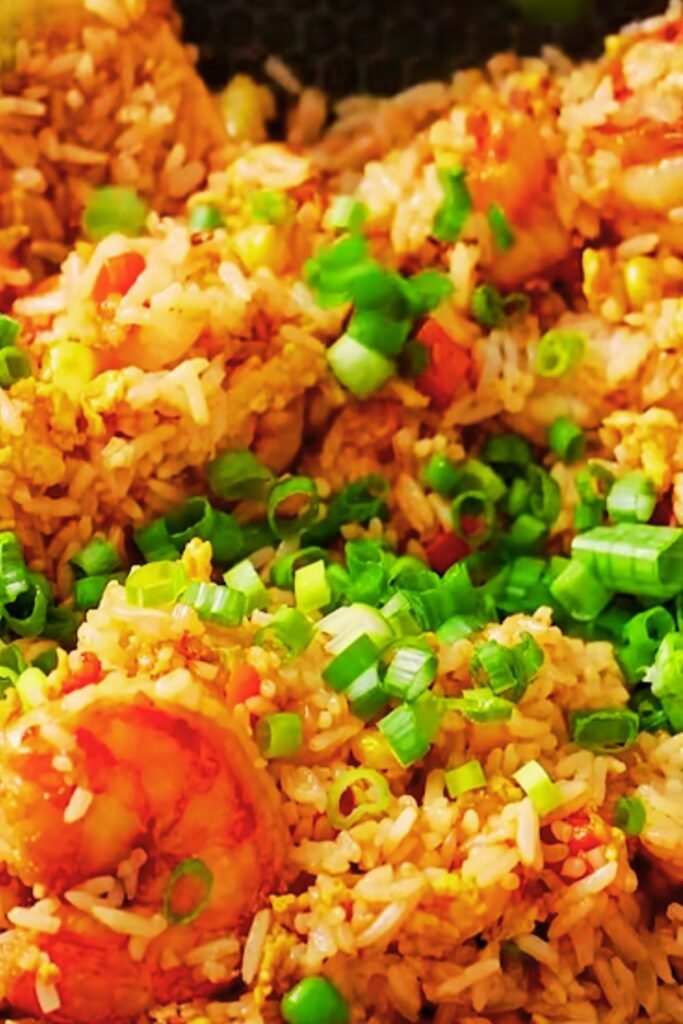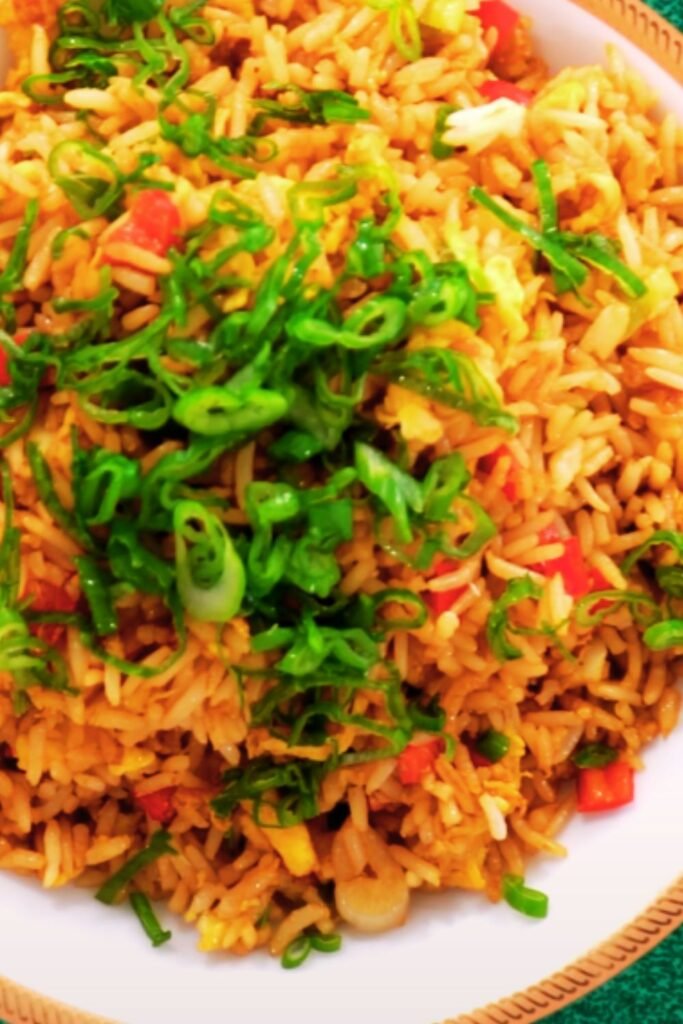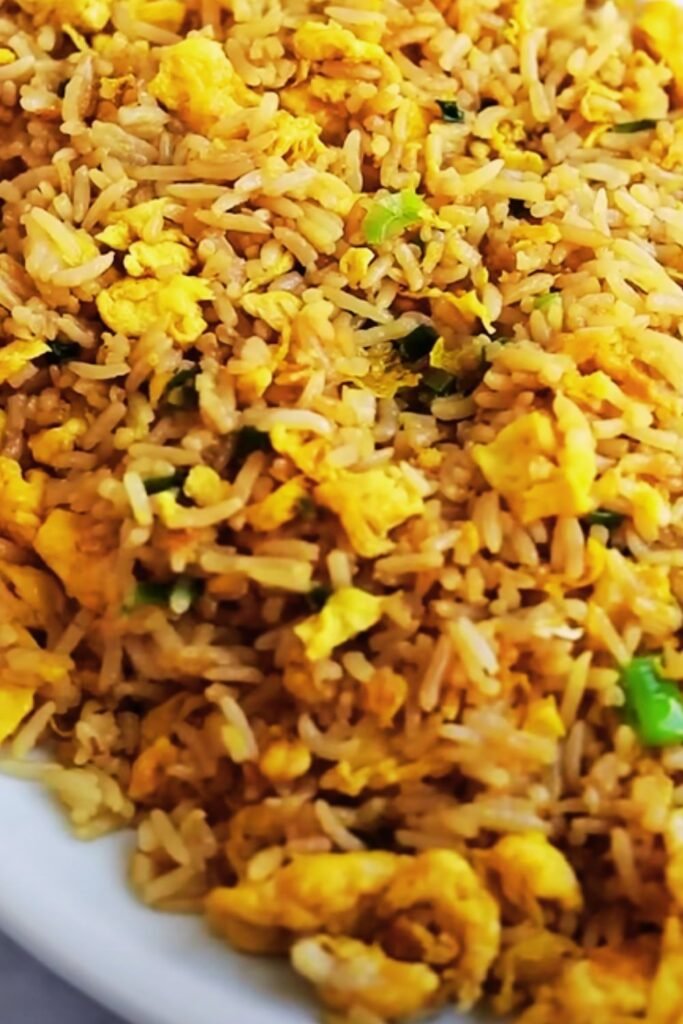I’ve been chasing the perfect fried rice recipe for years. You know that moment when you bite into restaurant fried rice and think, “How do they make it taste so incredible?” Well, I cracked the code, and I’m about to share every single secret with you.
After countless kitchen experiments, burnt rice disasters, and way too many takeout orders “for research purposes,” I finally developed a fried rice recipe that consistently beats my favorite Chinese restaurant. The key isn’t just one technique—it’s a combination of proper rice preparation, ingredient timing, and a few chef secrets that most home cooks never learn.
This isn’t your average fried rice tutorial. I’m going to walk you through everything from selecting the right rice variety to achieving that coveted “wok hei” flavor at home. By the end of this guide, you’ll have the confidence to whip up restaurant-quality fried rice whenever the craving hits.
The Foundation: Understanding Perfect Fried Rice
Before diving into the recipe, let’s establish what makes fried rice truly exceptional. Great fried rice isn’t just leftover rice tossed in a pan—it’s a carefully orchestrated dish where every grain maintains its individuality while absorbing incredible flavors.
Key Characteristics of Perfect Fried Rice:
- Individual grains that don’t clump together
- Even distribution of ingredients throughout
- Perfect balance of salty, savory, and umami flavors
- Slight smokiness from high-heat cooking
- Tender-crisp vegetables with vibrant colors
- Properly seasoned protein that complements rather than dominates
The science behind great fried rice lies in moisture control and heat management. Fresh rice contains too much moisture, creating a mushy mess when stir-fried. Day-old rice, however, has had time to dry out slightly, allowing each grain to fry individually and absorb flavors without becoming sticky.
Essential Ingredients and Equipment
Rice Selection and Preparation
Rice Varieties:
- Jasmine Rice: My top choice for its fragrant aroma and perfect texture
- Long-grain White Rice: Classic option with excellent separation
- Basmati Rice: Aromatic with naturally separate grains
- Medium-grain Rice: Works well but requires more careful handling
The Day-Old Rice Secret:
I cook my rice specifically for fried rice by using slightly less water than usual—about 1.5 cups water to 1 cup rice instead of the standard 2:1 ratio. This creates firmer grains that hold up better during stir-frying.
After cooking, I spread the rice on a large baking sheet and let it cool completely before refrigerating overnight. This process removes excess moisture and allows the starches to firm up, preventing mushiness during cooking.
Protein Options and Preparation
| Protein Type | Preparation Method | Cooking Time | Key Tips |
|---|---|---|---|
| Eggs | Scrambled separately first | 2-3 minutes | Use high heat, keep fluffy |
| Chicken Thighs | Cut into ½-inch pieces | 4-5 minutes | Season with soy sauce beforehand |
| Shrimp | Peeled, deveined, butterflied | 2-3 minutes | Don’t overcook, remove when pink |
| Pork | Diced into small cubes | 5-6 minutes | Use shoulder for best flavor |
| Beef | Sliced thin against grain | 3-4 minutes | Marinate for 15 minutes minimum |
| Ham | Diced, pre-cooked | 2 minutes | Add near end to warm through |
Vegetable Components
Essential Aromatics:
- Fresh garlic (4-5 cloves, minced)
- Fresh ginger (1-inch piece, minced)
- Green onions (6-8 stalks, white and green parts separated)
- Yellow onion (1 medium, diced)
Classic Vegetable Mix:
- Frozen peas and carrots (1 cup total)
- Fresh bean sprouts (1 cup)
- Bell peppers (1 medium, diced)
- Corn kernels (½ cup, optional)

The Complete Recipe: Step-by-Step
Ingredients List
For the Rice Base:
- 4 cups day-old cooked jasmine rice
- 3 tablespoons vegetable oil (divided)
- 1 tablespoon sesame oil
Protein Component:
- 3 large eggs, lightly beaten
- 8 oz protein of choice (prepared as per table above)
Vegetable Mix:
- 4 cloves garlic, minced
- 1-inch piece fresh ginger, minced
- 1 medium yellow onion, diced
- 1 cup frozen peas and carrots
- 6-8 green onions, chopped (whites and greens separated)
Sauce Blend:
- 3 tablespoons soy sauce (I prefer low-sodium)
- 1 tablespoon oyster sauce
- 1 teaspoon dark soy sauce (for color)
- 1 teaspoon rice vinegar
- ½ teaspoon white pepper
- 1 teaspoon sugar
- ½ teaspoon salt (adjust to taste)
Preparation Phase
Step 1: Sauce Preparation Mix all sauce ingredients in a small bowl and whisk until sugar dissolves completely. Set aside within easy reach of your cooking area.
Step 2: Ingredient Organization This is crucial for success. Arrange all ingredients in small bowls near your stove in the order you’ll use them. Fried rice cooking happens fast, and you won’t have time to prep during cooking.
Step 3: Rice Preparation If your day-old rice is clumped, gently break it apart with your hands or a fork. Don’t worry about getting every grain separate—the cooking process will handle that.
Cooking Process
Step 4: Heat Management Heat your wok or largest skillet over high heat until it’s smoking hot. This high heat is essential for achieving that restaurant-quality flavor and texture.
Step 5: Egg Cooking Add 1 tablespoon of vegetable oil to the hot pan. Pour in beaten eggs and let them set for about 30 seconds before gently scrambling. Remove eggs when they’re just set but still slightly soft—they’ll finish cooking later. Transfer to a plate.
Step 6: Protein Cooking Add another tablespoon of oil to the pan. Cook your chosen protein according to the timing in my table above. Remove and set aside with the eggs.
Step 7: Aromatics Foundation Add remaining oil to the pan. Stir-fry white parts of green onions, diced yellow onion, garlic, and ginger for about 1 minute until fragrant. The key is to not let the garlic brown.
Step 8: Rice Introduction Add the day-old rice to the pan. This is where the magic happens. Press the rice down and let it sit for 30 seconds to develop some caramelization, then stir vigorously. Repeat this process 2-3 times over about 3 minutes.

Step 9: Vegetable Integration Add frozen peas and carrots (they’ll thaw quickly in the hot pan). Stir-fry for 1-2 minutes until heated through and bright in color.
Step 10: Final Assembly Return eggs and protein to the pan. Pour sauce mixture around the edges of the pan (not directly on rice) to prevent cooling. Add sesame oil and green parts of scallions. Toss everything together for 1-2 minutes.
Advanced Techniques for Restaurant-Quality Results
Achieving Wok Hei at Home
Wok Hei literally means “breath of the wok”—that smoky, slightly charred flavor that makes restaurant fried rice so addictive. Here’s how I recreate it at home:
- Use the highest heat possible: Your burner should be at maximum output
- Don’t overcrowd: Cook in batches if necessary
- Let ingredients sear: Allow brief moments of contact with the hot pan surface
- Work quickly: Total cooking time should be under 10 minutes
Texture Optimization Techniques
The Press-and-Toss Method: Instead of constantly stirring, I press the rice down with my spatula, let it sear for 20-30 seconds, then toss. This creates textural contrast—some grains get slightly crispy while others remain tender.
Temperature Layering: I add ingredients based on their cooking requirements, starting with those needing the most heat and time. This ensures everything finishes cooking simultaneously without overcooking delicate components.
Nutritional Information and Variations
Nutritional Breakdown (Per Serving – Recipe Serves 4)
| Nutrient | Amount | % Daily Value |
|---|---|---|
| Calories | 385 | 19% |
| Carbohydrates | 52g | 17% |
| Protein | 16g | 32% |
| Fat | 12g | 18% |
| Fiber | 3g | 12% |
| Sodium | 890mg | 39% |
| Iron | 2.1mg | 12% |
| Vitamin C | 15mg | 17% |
Healthy Modifications
Lower Sodium Version:
- Reduce soy sauce to 2 tablespoons
- Use low-sodium soy sauce exclusively
- Add extra rice vinegar and a splash of lime juice for flavor depth
Higher Protein Variation:
- Increase protein portion to 12 oz
- Add extra eggs (4-5 total)
- Include edamame beans for plant-based protein
Vegetable-Forward Option:
- Double the vegetable quantities
- Add broccoli florets, snap peas, and mushrooms
- Reduce rice to 3 cups to maintain balance

Flavor Variations and Cultural Adaptations
Regional Fried Rice Styles
Thai-Style Adaptation:
- Add 1 tablespoon fish sauce to the sauce mixture
- Include diced pineapple and cashews
- Finish with fresh cilantro and lime wedges
- Use Thai basil if available
Japanese-Style (Yakimeshi):
- Use short-grain rice
- Add nori flakes and sesame seeds
- Include corn and mayonnaise
- Season with mirin and sake
Korean-Style (Bokkeumbap):
- Add 1 tablespoon gochujang to sauce
- Include kimchi (drained and chopped)
- Use sesame oil more liberally
- Top with a fried egg
Indonesian-Style (Nasi Goreng):
- Add sambal oelek for heat
- Include diced tomatoes
- Use sweet soy sauce (kecap manis)
- Garnish with fried shallots
Storage and Meal Prep Strategies
Proper Storage Techniques
Fried rice stores exceptionally well, making it perfect for meal prep. I portion cooled fried rice into airtight containers and refrigerate for up to 4 days or freeze for up to 3 months.
Reheating Methods:
- Stovetop: Add 1 tablespoon oil to a pan and reheat over medium heat, stirring occasionally
- Microwave: Add 1 tablespoon water, cover, and heat in 30-second intervals
- Oven: Spread in a baking dish, cover with foil, and reheat at 350°F for 10-15 minutes
Meal Prep Strategy
I often prepare components separately for easy weeknight assembly:
- Cook and store rice in large batches
- Pre-cut vegetables and store in the refrigerator
- Pre-mix sauce components
- Cook proteins in advance
This preparation method allows me to have fresh fried rice on the table in under 10 minutes on busy evenings.
Troubleshooting Common Problems
Issue Resolution Guide
| Problem | Cause | Solution |
|---|---|---|
| Mushy Rice | Rice too fresh or wet | Always use day-old rice; spread and cool properly |
| Clumpy Texture | Insufficient oil or heat | Increase oil quantity; ensure pan is hot enough |
| Bland Flavor | Under-seasoning | Taste and adjust; add sauce gradually |
| Burnt Garlic | Heat too high initially | Add aromatics after oil heats; watch carefully |
| Soggy Vegetables | Added too early | Add frozen vegetables last; fresh vegetables need timing |
| Dry Result | Not enough sauce | Reserve extra sauce; add gradually while cooking |
Serving Suggestions and Pairings
Complementary Dishes
Fried rice works beautifully as both a main dish and a side. Here are my favorite serving suggestions:
As a Main Course:
- Serve with cucumber salad dressed in rice vinegar
- Pair with steamed dumplings or spring rolls
- Add a side of hot and sour soup
- Include pickled vegetables for acidity balance
As a Side Dish:
- Perfect alongside grilled meats
- Complements stir-fried vegetables beautifully
- Works well with steamed fish
- Excellent with teriyaki chicken
Garnish Options:
- Chopped fresh cilantro or Thai basil
- Toasted sesame seeds
- Crispy fried onions or garlic
- Lime wedges for brightness
- Sliced green onions for color contrast
Questions and Answers
Q: Can I use freshly cooked rice instead of day-old rice? I’ve tried this many times, and while it’s possible, the results are never as good. Fresh rice contains too much moisture, leading to a sticky, clumpy texture. If you’re in a pinch, spread freshly cooked rice on a baking sheet and refrigerate for at least 2 hours before using.
Q: What’s the best oil for fried rice? I use vegetable oil or peanut oil for the high-heat cooking because of their neutral flavor and high smoke point. The sesame oil I add at the end provides that distinctive Asian flavor without burning during the cooking process.
Q: How do I prevent my vegetables from getting overcooked? The key is understanding cooking times and adding ingredients in the right order. Frozen vegetables like peas and carrots need less time than fresh ones. I add them during the last few minutes to maintain their color and slight crunch.
Q: Can I make fried rice without eggs? Absolutely! While eggs add richness and protein, they’re not essential. You can increase other protein sources or focus on a vegetable-heavy version. The recipe works just as well without them.
Q: Why does my fried rice lack that restaurant flavor? Usually, it comes down to three factors: not using high enough heat, not achieving proper rice texture, or under-seasoning. Make sure your pan is smoking hot, use day-old rice, and don’t be afraid to taste and adjust seasoning throughout cooking.
Q: How can I make my fried rice spicier? I add heat through sriracha, chili garlic sauce, or fresh sliced chilies. Add spicy elements gradually—you can always add more, but you can’t take it back. White pepper also adds a different kind of heat that’s traditional in Chinese cooking.
Q: Is it okay to use brown rice? Yes, brown rice works, but the cooking time increases slightly, and the texture will be different. Brown rice needs a few extra minutes to heat through properly, and the final dish will have a nuttier flavor and chewier texture.
Q: What size pan should I use? I recommend the largest skillet or wok you have. Overcrowding leads to steaming instead of frying, which creates mushy results. If you need to make a large batch, it’s better to cook it in two smaller batches than overcrowd one pan.
Q: How do I know when my fried rice is done? Perfect fried rice has individual grains that aren’t stuck together, vegetables that maintain some bite, and an overall aroma that’s fragrant and slightly smoky. The rice should look slightly glossy from the sauce and oil, and everything should be heated through evenly.
This fried rice recipe has transformed my weeknight dinners and impressed countless dinner guests. The beauty lies not just in the final dish, but in mastering the techniques that you can apply to countless other stir-fry dishes. Once you’ve nailed the timing and heat management, you’ll find yourself creating restaurant-quality meals with confidence and creativity.
Remember, cooking is about understanding principles, not just following recipes. Each time you make this fried rice, you’ll notice something new, refine your technique, and make it even better. That’s the journey from good home cooking to truly exceptional results that rival any takeout order.